By Marie Freebody, Contributing Editor
After 120 years of faithful service, the incandescent bulb is bowing out in favor of more energy-efficient lighting. All over the world, governments are introducing new rules to phase out the traditional lightbulb. In September 2009, the European Union banned manufacturers and importers from selling clear incandescent lightbulbs of 100 W or above. This ban will be expanded in September 2011 and 2012 to include lower wattages of clear incandescent bulbs. And in the US, the phasing out of traditional lightbulbs will begin in 2012 when, by law, all bulbs must be 30 percent or more efficient than current incandescent versions.
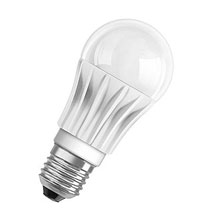
Solid-state lighting solutions such as LEDs and organic LEDs (OLEDs) seem perfectly placed to take over where the incandescent bulb leaves off. Today, LEDs already are being used in both functional and decorative light fixtures, where they offer a marked advantage in energy saving. Compared with incandescent lighting, LED-based lighting delivers visible light with reduced heat, and what’s more, its solid-state nature provides for greater resistance to wear, shock and vibration, dramatically increasing its life span.
“LEDs offer a lot of benefits compared with classic light sources. From our point of view as a component manufacturer, the most important, in the medium term, is clearly their relatively high efficiency,” said Dr. Michael Fiebig, who is head of marketing and business development of LEDs and OLEDs in Osram Opto Semiconductors’ solid-state lighting division in Regensburg, Germany. “Whereas a white incandescent lamp converts just 3 percent of the input power into light, the figure for LED components is already around 30 percent.”
According to Fiebig, the Osram Parathom Classic is the world’s first bulb-shaped LED lamp with a screw base that can fully replace a 40-W incandescent lamp in a few swift moves.
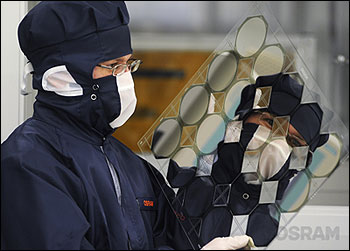
An employee of Osram Opto Semiconductors checks the coated OLED panels for regularity. The focus here is on purity as well as the displacement of different coatings. Images courtesy of Osram Opto Semiconductors.
“The Parathom Classic requires just 8 W to achieve the same light yield – i.e., 80 percent less energy,” he explained. “And with an average service life of 25,000 hours, it outlasts an incandescent lamp by a factor of 25. All told, every lamp will save almost €200 in electricity as well as more than 400 kg of carbon dioxide emissions.”
It seems that, although the incandescent lamp is at the end of its development, LEDs are only at the start of theirs. There is unmistakable potential for efficiency to be even higher, which would make the LED one of the most efficient light sources of all. In technically mature solutions, it is therefore possible to reduce electricity costs by 30 to 50 percent – and even by 80 percent in some cases, depending on the type and configuration of the system. Although there is still room for improvement in terms of cost compared with conventional lamp technologies, LED solutions are becoming increasingly in demand.
Fiebig expects LEDs to make major inroads into general lighting between 2010 and 2012. In the short and medium term, he envisages LEDs being used not only for architectural lighting but also predominantly for design-oriented lighting (for example in hospitality), for shop and office lighting, and for outdoor applications that require high reliability and efficiency.
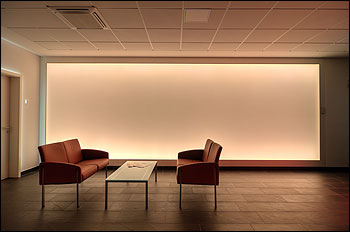
The wall of LED light provides all the lighting for the visitors’ area at Osram’s head office in Regensburg, Germany. With a range of lighting scenarios, the 17-sq-m area produces varying degrees of brightness and moods.
The first projects in outdoor lighting, such as street lighting, tunnel lighting and lighting for city squares, are now under way, and many believe that LED solutions will conquer mass markets in the next one to three years.
In fact, according to an LED report by ElectroniCast Consultants, a market forecasting firm in Upper Lake, Calif., the use of LEDs in exterior residential, commercial and government lamps and lighting fixtures in 2009 represents most of the worldwide consumption of LEDs in solid-state general lighting. Applications include lighting for streets and parking lots, roadway tunnels, bridges, landscaping, pools and fountains, buildings, and architectural and other general lighting. The use of LEDs in exterior lamps and lighting fixtures is forecast to become less dominant, however, as interior solid-state lighting takes hold.
OLEDs poised for unique applications
Although LEDs are the ideal solution for applications in which directed light is of the essence, OLEDs offer the opposite effect. They can be incorporated into entire walls, causing them to radiate an even glow of light, or even into tiles, which can be fitted to ceilings as an alternative to hanging light fixtures.
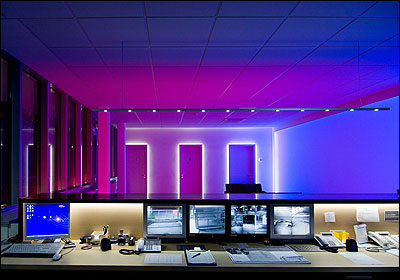
By backlighting monitors, LEDs can light work spaces ergonomically.
“The homogeneous output, unusual appearance, low heat emission, extremely flat nature and high degree of controllability of OLEDs offer designers, artists and architects great freedom in creating groundbreaking new lighting concepts and experiences,” said Jeannet Harpe-Goor of Philips Lighting Communications in Surrey, UK. “These characteristics will greatly appeal to consumers by making it possible to change the atmosphere in a room in dramatic and unexpected ways.”
Philips has just begun to unlock possible applications of OLEDs, she said. The unique lighting source offers distinctive characteristics and capabilities that can redefine lighting and the way we use and experience it.
“OLEDS are still at the early stages of their development,” she said. “At the moment, we are entering the stage where OLEDs can be mass-produced and used in decorative lighting and other applications like signage.”
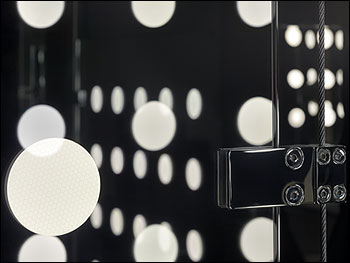
Osram exhibits completely new lighting possibilities with arrangements of hundreds of OLEDs.
Although OLEDs have yet to enter the commercial lighting market, they are generating much interest from display manufacturers in the form of OLED TVs. Thanks to OLED technology, manufacturers can do away with backlighting because each pixel emits its own light, resulting in ultrathin designs. LG Display currently boasts the largest commercially available OLED TV at 15 in. and expects to begin volume production of 30-in.-class large-size OLED panels in 2011 or 2012.
What’s next: Possibilities, challenges
Thanks to properties such as large-area light emission rather than a point source and an emission output that is more similar to sunlight, OLEDs are opening up new applications, with murmurs of OLEDs being used in clothing, furniture, vehicles, jewelry and even works of art.
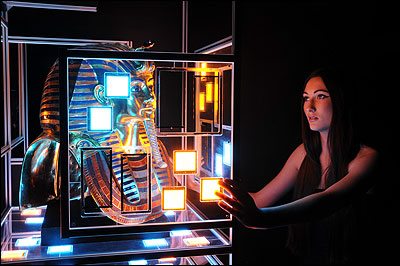
For added impact, OLED lighting can be incorporated into the display area surrounding works of art.
“The active, organic and mostly transparent layers of OLEDs are extremely thin, measuring less than 500 nm. This makes the complete OLED itself extremely flat, lightweight and potentially flexible,” Fiebig said. “The lighting system can therefore be ultralow-profile, transparent and flexible and can cover a large area.”
Although the unique properties of OLEDs are well-recognized, manufacturers appreciate that thinner and more flexible substrates would further enhance their potential. Other challenges for OLED lighting include producing large-area diffuse light output, higher brightness levels, longer lifetimes and good-quality white and mixed colors.
“Technically, there is also the challenge of barrier layers for flexible OLEDs, which, once solved, could enable interesting new segments, where light from OLEDs is even more used as a material because it becomes conformable,“ Harpe-Goor said.
Not everyone envisions an all-solid-state future in lighting, however. Fiebig believes that not one type of lighting will completely replace another, unless statutory regulations dictate otherwise, as is the case with the ordinary incandescent lightbulb.
“After all, candles are still being used, even though people expected them to disappear entirely with the advent of electrical light,” he said. “LEDs will certainly be at least on a par with other high-performance, low-consumption lamp types, such as halogen, compact fluorescent lamp and high-intensity discharge products. But we do not believe that there will only be LEDs or OLEDs.”